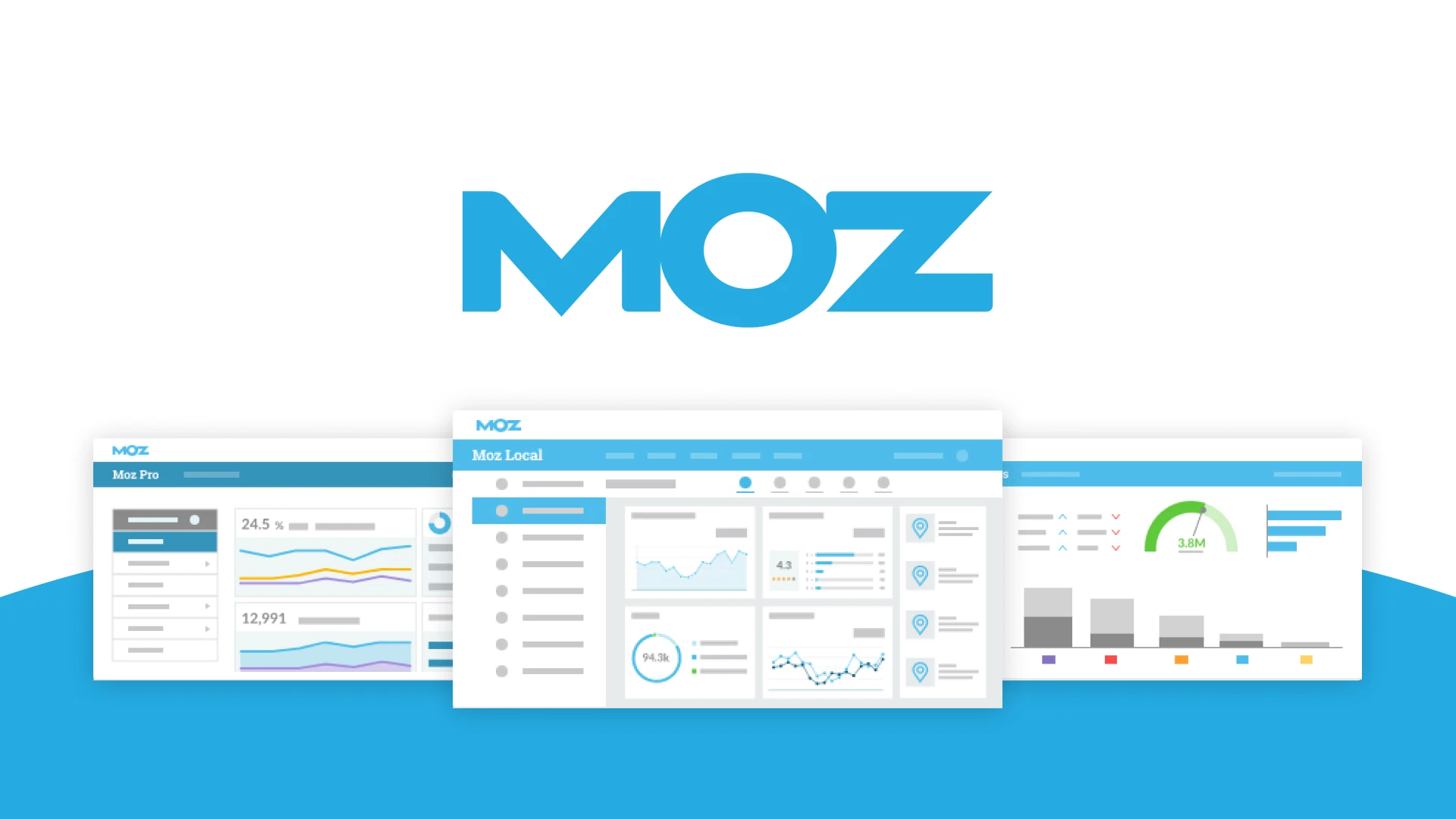With a large number of websites competing for buyers’ attention, you need to make sure your online website stands out. This is where ranking optimization comes in. Ranking optimization, often referred to as search engine optimization (SEO), involves a strategic blend of techniques and methodologies aimed at improving the visibility of a website in search engine results pages (SERPs).
Ranking optimization
Given that the majority of online experiences begin with a search engine, securing a top position in search results can dramatically increase your site’s visibility, drive higher traffic, and ultimately enhance conversion rates. The process encompasses various aspects, including keyword optimization, where you incorporate relevant and highly searched keywords into your website’s content.
This involves on-page optimization, which means structuring your site’s HTML to be more search-engine friendly, and off-page optimization, such as building backlinks from reputable sites to boost your site’s credibility and search ranking. Additionally, with the growing influence of social media and mobile browsing, ranking optimization also extends to these platforms, ensuring that your website delivers a seamless and engaging user experience across all devices and channels.
Ranking a particular keyword involves including it on your page in a consistent and natural way. This will help Google better understand the content of your site. Later, Google will rank your site better and users will be able to find you more easily. Conducting keyword searches for your website is just one of the first steps towards finding your potential online customers.
By posting blog posts and engaging content, you can build a personal relationship with your users and improve your search engine rankings. The more visitors you have on your website, the more Google sees your site as credible, thus moving you further to the top of its page results, and even pushing sales online.
Improving your ranking optimization with the suitables titles and metadata not only allows Google to crawl and index your pages faster. This participates effectively in allowing you to better promote your website.
Social media play an important role in promoting your online presence. However, content marketing, SEO and social media must be used together for an effective and winning strategy. Social media and content marketing can then help your site rank on search engines.
You’ve searched for keywords, written about your products and set up all your social media accounts. What else do you have to do? One of the most important tools you need to manage your website effectively is a system that tracks your site traffic. Without any form of tracking, it would be almost impossible to know the level of success of your online efforts.
Now that you have basic knowledge from SEO Specialist, you can finally start ranking higher than your competitors! Mastering the art of ranking optimization is essential for any business aiming to thrive in the crowded digital marketplace. By starting with meticulous keyword research, you can ensure that your website communicates effectively with both Google’s algorithms and potential customers.
The creation of relevant, engaging blog content fosters a personal connection with visitors, enhancing your site’s credibility and search engine rankings. Paying close attention to titles and meta tags further optimizes your site for indexing, while integrating social media amplifies your online presence, creating a synergistic effect with your ranking optimization efforts.
However, the journey doesn’t end with implementation. Continuous measurement and analysis of site traffic are crucial for understanding the impact of your strategies and for making informed adjustments. Armed with these insights and a commitment to ongoing optimization, you are well-positioned to outshine your competitors and capture the attention of your target audience, ultimately securing a prominent online presence that drives success.
By embracing these practices, you are not just aiming to rank higher in search results, but you are also building a stronger, more visible, and engaging online presence that can attract and retain customers. With the right approach to ranking optimization, your business can achieve greater visibility, drive more traffic to your site, and ultimately, secure a leading edge in the digital marketplace.
In the digital age, ranking optimization is more than a technical necessity, but a fundamental pillar of your business strategy. The online marketplace is an incredibly crowded and competitive arena. With millions of businesses fighting for limited attention spans, simply having a website is no longer enough. Ranking optimization is your ticket to visibility, discoverability, and, ultimately, profitability.
At its core, ranking optimization starts with understanding your audience. Without knowing who your ideal customers are and what they are searching for, any SEO strategy is likely to fail. This is why keywords research is so essential. It’s not just about finding popular words, but understanding user intent. Are they looking to buy ? To learn ? To compare ? By carefully mapping out these search intents, you can tailor your website’s content to answer those questions directly, making your site more attractive to both users and search engines.
However, effective SEO is not only about keywords, but the entire ecosystem of your site. On-page optimization ensures that your website is structured in a way that search engines can easily crawl, interpret, and index. This includes using clear, descriptive titles and headings, properly formatting URLs, ensuring a logical site structure with internal linking, and optimizing images with alt text. These seemingly small details all add up, making it easier for search engines to understand what your pages are about and rank them appropriately.
Equally important is technical SEO, which delves into the performance and functionality of your website. Search engines favor websites that load quickly, are secured by HTTPS, and are mobile-friendly. In today’s world, where most users access the web from smartphones, having a responsive design is not optional. Google’s mobile-first indexing means that your mobile site is the primary version considered in ranking optimization. This makes it imperative to deliver a flawless experience across devices.
Meanwhile, off-page optimization deals with building your site’s authority. One of the most influential ranking factors is the number and quality of backlinks, which are links from other reputable websites to yours. Think of backlinks as endorsements. When a trusted site links to you, it signals to search engines that your content is credible and valuable. Earning these often requires publishing high-quality, shareable content and developing relationships within your industry. Guest blogging, influencer outreach, and digital PR are all part of this effort.
Content remains at the heart of ranking optimization. Search engines aim to deliver the best possible answers to users, and your content must be that answer. This means creating in-depth, useful, and engaging content that addresses your audience’s needs. Blogging is one of the most effective tools for this. Each blog post is a new opportunity to rank for additional keywords, answer customer questions, and establish authority in your field. Furthermore, long-form content that covers a topic comprehensively tends to perform better in search rankings, as it demonstrates expertise and satisfies users seeking detailed information.
Beyond written content, SEO also extends to other formats. Video has become an increasingly important part of search engine optimization, as Google recognizes that users want diverse types of content. Optimizing your videos with proper titles, descriptions, transcripts, and even structured data helps them appear in search results. Similarly, images and infographics can drive traffic through image search if they are properly tagged and optimized.
The role of metadata in ranking optimization cannot be overstated. Titles and meta descriptions may seem like minor details, but they are the first thing a user sees in search results. A compelling title can increase your click-through rate, signaling to Google that your page is relevant and engaging. Well-crafted meta descriptions summarize your page content and can entice users to choose your link over others. Optimizing metadata is therefore both an SEO and a marketing exercise.
Local SEO is another dimension that businesses, especially those with a physical presence, cannot ignore. When users search for nearby services or in a specific location, Google’s search algorithm kicks in. To compete, you need to claim and optimize your Google Business Profile, ensure your name, address, and phone number are consistent across the web, and encourage satisfied customers to leave reviews. These efforts help your business appear in the coveted local pack results, driving foot traffic and local sales.
Ranking optimization today is also deeply intertwined with user experience (UX). Google has increasingly prioritized factors that reflect how users interact with your site. Metrics like bounce rate, time on page, and pages per session all tell search engines whether users are finding value on your site or leaving quickly in frustration. Google’s Core Web Vitals are specific metrics that measure aspects of UX, such as loading speed, interactivity, and visual stability. Failing to meet these benchmarks can hurt your rankings even if your content is otherwise excellent.
Social media is another important element in the ranking optimization ecosystem. While their signals themselves are not direct ranking factors in Google’s algorithm, they help you distribute your content, build brand awareness, and attract traffic that can result in backlinks. A strong social media strategy complements your SEO efforts by expanding your reach and engaging your audience on the platforms where they already spend their time. By integrating social media with your SEO strategy, you create a holistic approach to online visibility.
The process of ranking optimization is not static. Algorithms change constantly. Google updates its search algorithm hundreds of times a year, with major core updates that can significantly shift rankings. This means that successful SEO requires ongoing monitoring, testing, and adjustment. Tools like Google Analytics and Search Console are necessary for tracking your performance, identifying issues, and discovering new opportunities. By analyzing which keywords are driving traffic, which pages are underperforming, and how users behave on your site, you can make data-driven decisions to refine your strategy.
Additionally, competition in the digital marketplace is relentless. Your competitors are likely investing in SEO too, which means that standing still is not an option. A ranking you achieve today can slip tomorrow if your competitors improve their strategies or if user search behavior evolves. This competitive dynamic is precisely why ranking optimization is an ongoing process, not a one-time project.
An effective SEO strategy also requires alignment with broader marketing and business goals. SEO is not an isolated task. It should work hand in hand with content marketing, social media, paid advertising, and even offline initiatives. A well-integrated approach ensures consistent messaging across channels, maximizes the return on your marketing investment, and strengthens your brand in the minds of customers.
For ecommerce sites in particular, ranking optimization is crucial. With product pages competing in a crowded online retail space, optimizing for the right keywords, writing detailed and persuasive product descriptions, including user-generated content like reviews, and ensuring smooth navigation can all improve both rankings and conversions. Structured data can also help search engines better understand your products and display rich results such as star ratings, price, and availability right in the SERPs, boosting click-through rates.
Emerging trends in SEO include voice search optimization. As more users turn to voice assistants like Siri, Alexa, and Google Assistant, searches are becoming more conversational and question-based. Optimizing your content to answer these natural-language queries often means adopting a more FAQ-style format and targeting long-tail keywords.
Another trend related to ranking optimization is the growing importance of AI in search. Tools like Google’s Search Generative Experience are changing the way results are presented, often summarizing answers directly. This means that ranking well may increasingly depend on having the most authoritative, well-structured, and semantically rich content available.
Ethical SEO practices are critical as well. Search engines penalize unethical tactics like keywords stuffing, cloaking, and buying low-quality backlinks. Sustainable SEO focuses on creating genuine value for users, earning trust, and complying with best practices laid out by search engines. This approach not only protects your site from penalties but also builds long-term credibility with both users and search engines.
Ultimately, ranking optimization is about understanding and serving your audience better than anyone else. It is about anticipating their questions, solving their problems, and delivering the best experience possible. When you do this successfully, you not only improve your rankings but also build lasting relationships with customers who will return, recommend you, and help grow your business organically.
By committing to the principles of ranking optimization, thorough research, technical excellence, compelling content, user-focused design, strategic promotion, and ongoing measurement, you can navigate the complex and ever-changing digital landscape with confidence. You’ll be equipped to adapt to new trends, outperform competitors, and secure the online visibility that drives real-world success.
One of the most overlooked aspects of ranking optimization is the importance of understanding your competitors, through a dedicated analysis, which is not about copying what others are doing, but gaining strategic insight into their strengths, weaknesses, and gaps in their approach. By using SEO tools to analyze their backlinks, keywords, and content strategies, you can identify opportunities to outperform them. For example, you might discover valuable keywords they have overlooked, or find that their backlink profile relies heavily on low-quality sources you can surpass by targeting higher-authority domains.
Competitor research can also reveal content gaps in your own website. If your rivals have detailed, high-ranking guides on topics you haven’t covered, you can prioritize creating better, more comprehensive versions. This strategy involves studying top-performing content in your niche and then creating something even more valuable. By doing so, you not only appeal to users but also increase your chances of earning high-quality backlinks, which are still among the most important ranking factors.
Another critical component of ranking optimization is content freshness. Search engines want to deliver the most up-to-date and relevant results to users. That means regularly reviewing and updating your existing content can have a significant positive impact on rankings. This might involve adding new sections, updating statistics, improving readability, or optimizing for new related keywords that have gained search volume. Such proactive maintenance shows search engines that your site is active and committed to delivering value.
User engagement metrics have also become increasingly important. Google and other search engines analyze how users interact with your content to help determine its quality and relevance. If users quickly leave your page or rarely click through to other sections of your site, it can signal that your content isn’t meeting their needs. Conversely, if visitors spend time reading, watching, or interacting with your pages, and if they visit multiple pages during a session, it indicates strong relevance and can help improve rankings over time.
To boost ranking optimization, it’s essential to design your content with the user journey in mind. Use clear headings, bullet points, and visual elements to break up walls of text. Incorporate multimedia, such as images, videos, and interactive tools, to make the experience richer and more engaging. Include clear calls-to-action that guide users toward the next logical step, whether it’s reading a related article, subscribing to a newsletter, or making a purchase.
Voice search optimization is another emerging innovation. As smart speakers and virtual assistants become increasingly popular, people are using natural language queries more than ever. This shift means that your SEO strategy must account for conversational keywords and question-based searches. Creating FAQ pages, using natural language in your content, and structuring data to answer specific questions can help you capture this growing segment of search traffic.
Moreover, international ranking optimization is vital for businesses targeting audiences in multiple regions or languages. Optimizing for international markets involves much more than simply translating your content. It requires understanding search behavior, cultural nuances, and even local competitors. Implementing linguistic tags, creating region-specific content, and ensuring that your site’s technical setup supports multiple languages can all improve your visibility in international search results.
Finally, accessibility should not be ignored in ranking optimization. Search engines increasingly value websites that are accessible to all users, including those with disabilities. By following best practices like providing alt text for images, ensuring keyboard navigation, and maintaining clear, semantic HTML, you not only improve your SEO but also expand your audience to include those who rely on assistive technologies.
Ranking optimization is not a shortcut to success but a long-term commitment to quality, relevance, and user-centric thinking. It is a discipline that rewards patience, experimentation, and adaptability. By investing the time and resources to master SEO holistically, from technical details to content quality and user experience, you lay the groundwork for sustained online visibility, authority in your field, and enduring business growth.











